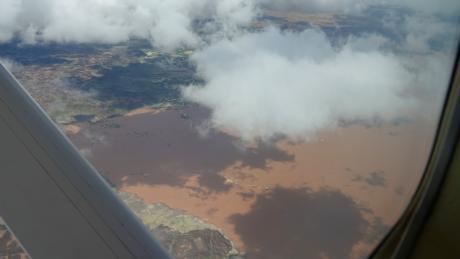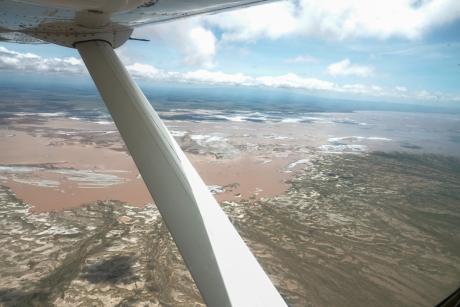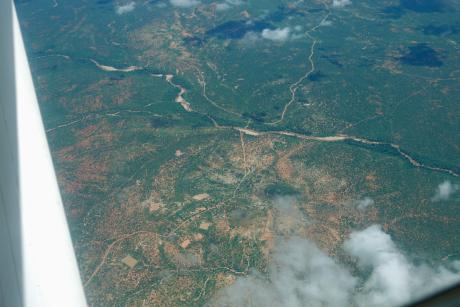
An MAF Disaster Response flight to Marsabit has surveyed the impact that heavy rains have had on vital routes through the desert.
Communities in the north-east of Kenya face long periods of isolation after severe flooding washed away key routes.
As part of MAF’s response to the nation’s devastating flash floods, a flight on May 10 from Nairobi’s Wilson Airport has surveyed the effects of heavy rains on the normally dry region around Marsabit.
The region experienced sustained wet weather not seen in over 40 years. Settlements around the region are in the highlands but between them is the Chalbi Desert.
All roads connecting those settlements go through this desert. Those roads are so severely flooded that it may take months before it dries up to allow for easy movement.

Sam Baguma, who is leading MAF’s Disaster Response in Kenya, said that although most settlements are on high ground, the roads that link them are underwater.
“Going all the way up north, this is some of the most isolated areas,” Sam said. “In between the settlements, we have a desert. Deserts are known to have thick sand everywhere but all that is now mud.
“The roads that are meant to be going through the desert are all completely waterlogged.
“We were told that it would normally take five hours to drive from one highland settlement to another. Dirt roads all go through the desert to get to various communities. All these roads are flooded, it’s taking people four or five days, we saw trucks that are stuck.
“Now they are saying it will probably take months for that whole desert to dry out, before these roads are passable again.
“Those are the communities that we feel may need the greatest amount of help.”

Sam said the information gathered on the flight would help partners bring help to the region. His next step was to meet with the Integral Alliance of Christian aid organisations to explore ways to bring help on MAF aircraft to the areas of greatest need.
“There are quite a number of airstrips in different communities, so if there is aid that can reach there, we would be able to take it up to these areas,” he added. “That’s the message I will be trying to communicate to our partners – the roads up there are impassable because of the heavy rains.”
The May 10 flight brought a team from Signs of Hope to Marsabit to assess the situation on the ground.
As the Disaster Response effort ramps up, Sam said the community needs will become clearer as the initial flooding subsides.
“It is when these waters actually begin to recede and the mud is sitting on the communities, the houses are sitting in water, the food crops are washed away – that’s when you are going to begin to see communities suffering,” he said. “A lot of the emergency relief goes in very quickly when everything is just happening, but what we are seeing is that a few weeks down the line these communities are still greatly affected.”

That support will come from partner organisations working in Kenya who will be able to make use of MAF’s Disaster Response flights to isolated communities.
“The thing about MAF is that we connect with so many different organisations,” Sam explained. “What we want is to be the catalyst for the help that is needed in these communities.
“By us doing these surveys, it brings forth critical information that we can share with partners and say this is the extent of the problem, what do you have with you that could respond to this? That’s the first stage, to reach out to different partners and the government as well.”
For more on MAF's Disaster Response click here